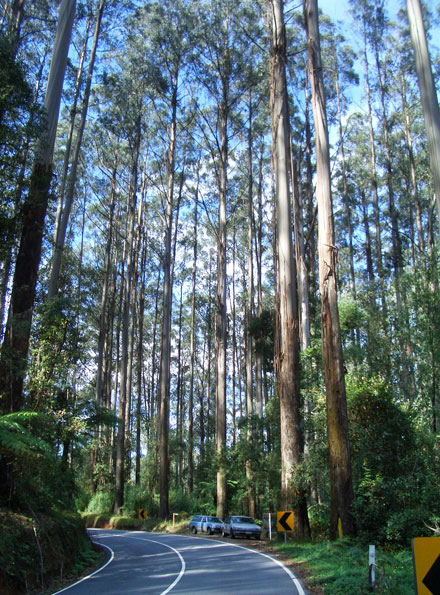
It may be harder to spot a mountain ash in parts of Australia’s mountains or some species of mallee trees in the outback within 60 years as climate change causes the range of many species of eucalypts to shrink or even disappear entirely, new research suggests. Source: ABC News
A team of researchers studied more than 650 species of eucalypts across Australia to see what would happen to the trees as the country’s climate warmed by three degrees Celsius.
“We looked at the distribution of the eucalypts, where they are nowadays, and where they would possibly be given the climate change scenario, in 60 years,” said study co-author Associate Professor Bernd Gruber of the University of Canberra.
“We found there was a major shift in the available habitats for these species, and where they’re going to. We used that to identify areas which may be important for conservation.”
The research, published in Nature Climate Change, is based on the Intergovernmental Panel on Climate Change’s intermediate emissions scenario, where emissions peak in 2060 and reach 3 degrees Celsius above pre-industrial levels by 2100.
While a handful of species would increase their habitat range, distribution of more than 90% of eucalypt species would shrink in size by an average of 50% in the next 60 years.
Sixteen of the species studied – predominantly mallee trees – were predicted to disappear completely from their current ranges in this time.
Dr Gruber said the shift is predicted to happen as the “climate niche” – or the temperature and rainfall required for eucalypt species to thrive – narrows due to climate change. Areas that are currently suitable environments for eucalypts – Queensland, Western Australia, Victoria and parts of New South Wales – will become hotter, and with that, the distribution of eucalypts such as black box (Eucalyptus largiflorens), jarrah (Eucalyptus marginata), and mountain ash (Eucalyptus regnans) in those areas will shrink.
“[Some eucalypts] disappear and shift towards the edges of Australia, towards the south and to higher altitudes,” Dr Gruber said.
While he said it’s likely other trees will replace eucalypts lost, the overall diversity of the environment will be impacted.
“Don’t think Australia will be barren, or that there won’t be any trees, that’s not the case,” Dr Gruber said.
“But the biodiversity of the trees in Australia will be reduced in central areas.”
The researchers found biodiversity hotspots, where older, rarer species of eucalypts currently grow, in southeast Queensland, northern coastal New South Wales, and central Australia were particularly at risk.
Dr Gruber said the loss of trees in some areas was likely to have a knock-on effect on other parts of the environment.
“If your tree disappears, some insects will disappear, and then probably some birds will disappear. It won’t be only a shift in trees, it will be a shift in the biodiversity of Australia overall,” he said.
“There will be a homogenisation of the biodiversity of Australia … it will be a bit more boring.”







